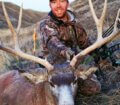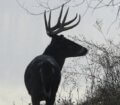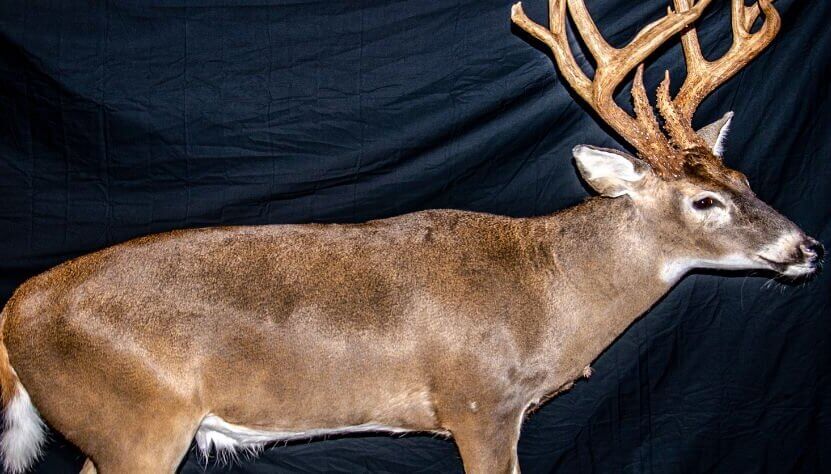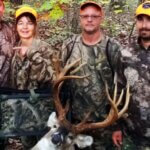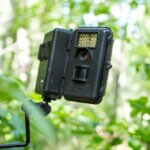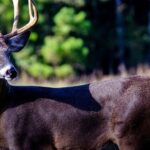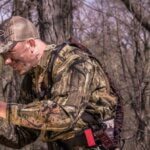Editor’s Note: Michael Perry of Vinemont, Alabama, a longtime, successful public-land hunter, says, “I don’t want to give the impression that I think I know everything there is to know about how to hunt and take mature public-land bucks successfully. However, my family has been hunting public lands for over 50 years and has taken some nice, older bucks. I’ve learned how to scout to find these mature bucks, how and when to hunt them and get older, heavy, well-racked bucks out of remote areas. Most of the big bucks I’ve taken on public lands, I’ve never even seen before until I’ve squeezed the trigger on my mechanical release, my muzzleloader, or my granddaddy’s .30-06 Mauser.
“In the 2021 deer season, I took a buck scoring 195-6/8 inches on a state WMA. In 1998, my brother Matthew had taken a 180-1/8 inch public-land buck. And a friend of my dad’s took a 170-inch buck in the 1970s on public lands. Over the years, I’ve taken 38 public land bucks, 8 points or better. I’ve kept meticulous records in my journals about how we’ve hunted these bucks, where we’ve hunted, and what has made us successful in taking older-age-class bucks on public lands. I hope my information will help you learn tactics to become more successful on the public lands you hunt in any state.”
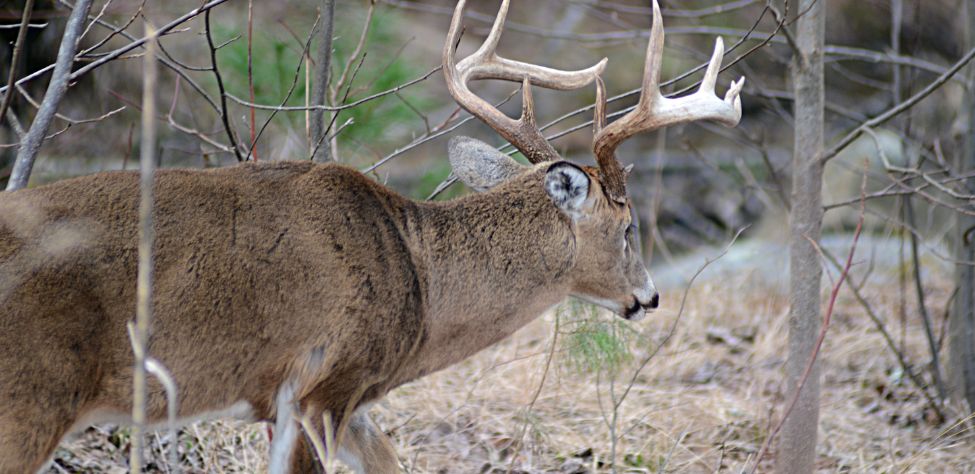
Chris Cook, longtime Alabama wildlife biologist, explains about hunting public lands, “I’ve worked on several Wildlife Management Areas during the past 20 years where Michael Perry and his family hunt. They’re dedicated to hunting and taking 3-1/2-year-old and older bucks on public lands. Michael scouts year-round and learns all he can about the bucks living on the WMAs he’s hunting. Through the years, I know that when Michael goes hunting, he probably has a 50/50 chance of taking a nice deer that day. Michael has learned how to hunt and take big bucks on public lands. His tactics consistently produce one or more nice bucks each season. I consider Michael one of the best public-land deer hunters I’ve ever known. He’s identified where mature bucks live on the public lands he hunts and does everything possible to put the odds in his favor to take them each season.”
Michael Perry states, “I began hunting the Black Warrior Wildlife Management Area in northwestern Alabama when I was eight, and today I’m 57. As a child, I hunted with my father – with me hunting squirrels while he scouted for deer – on its 91,263 acres that contains some of the roughest and most mountainous terrain in the State of Alabama.
“I’ve learned that one of the secrets of taking older-age-class bucks on public lands is spending as much time as possible before, during, and after deer season on that property. Also, keeping a logbook of everything you see and learn there, the weather conditions, the time of year, and the locations where you’ve scouted and hunted, is very important to later success. Get your friends and family who hunt the same land as you to give you information you can record in your written journal or computer database. Today I have a deep database in my journals of the older-age-calls bucks on Black Warrior.
“In my early days of deer hunting, I never had shot or seen a mature buck in the section of the Black Warrior WMA where I often hunted. Then during the 2005-2006 deer season, I took a 158-2/8-inch buck with my rifle at the Black Warrior WMA. The Black Warrior WMA today has a history of producing big bucks for the hunters willing to climb the mountains, go deeper in the woods than other hunters, and stay all day to see bucks.”

During October 2018-2019 deer season, Perry set up a trail camera at the bottom of a mountain near a creek crossing and got photos of several nice bucks. He then tried to learn where the bucks were going and coming. The creek crossing was below a 40-yard wide and a 500-yard long bench on the side of the mountain. However, the trails weren’t well-defined from the creek crossing to the bench. By the 2021 season, Perry had three years of trail-camera pictures from that place, including a few photos of a huge buck that he named the Bench Buck. By traveling so far back in the woods, he seldom encountered another hunter.
Because Perry was primarily a morning hunter, and in the mornings, the thermals (wind currents) moved up the mountains, he wanted to be above the Bench Buck. Then when the buck showed up, he was far less likely to smell Perry than if Perry was on the same level as the huge buck or below him.
Perry walked down the entire length of the 500-yard bench, discovered several large blowdowns from storms, and decided the large buck probably was bedding in the blowdowns, walking down the edge of the bench, feeding on the white oak acorns growing on the trees on the sides of the bench and then crossing the creek. So, he put his API stand above the bench.
“The rut on the Black Warrior WM is the earliest to take place in Alabama, beginning around November 13 each year, although some of the region’s older does come into estrus earlier than that date,” Perry reports. “Although I hunted the Bench Buck during the 2021 bow season, I didn’t get an opportunity to take him. I truly wanted to hunt him with my black powder rifle during Alabama’s designated, week-long black powder season.”
Some of Michael Perry’s Scouting Tips:
“I start getting my body in condition as soon as deer season ends: in July, I’ll hike 3-6 miles with my pack, wearing my hunting boots, two to three times a week; I’ll curl a pair of 25-pound dumbbells three times a week; I’ll do 40-50 pushups, three to five times a week; and I’ll climb stadium steps at a football field.
“I use my GPS and onX Maps to navigate while scouting and to record the places I find the best deer sign to hunt so that I can return to them during hunting season.
“I scout all year long, remain as silent and invisible as possible in the woods, and consider myself an old-school hunter.”
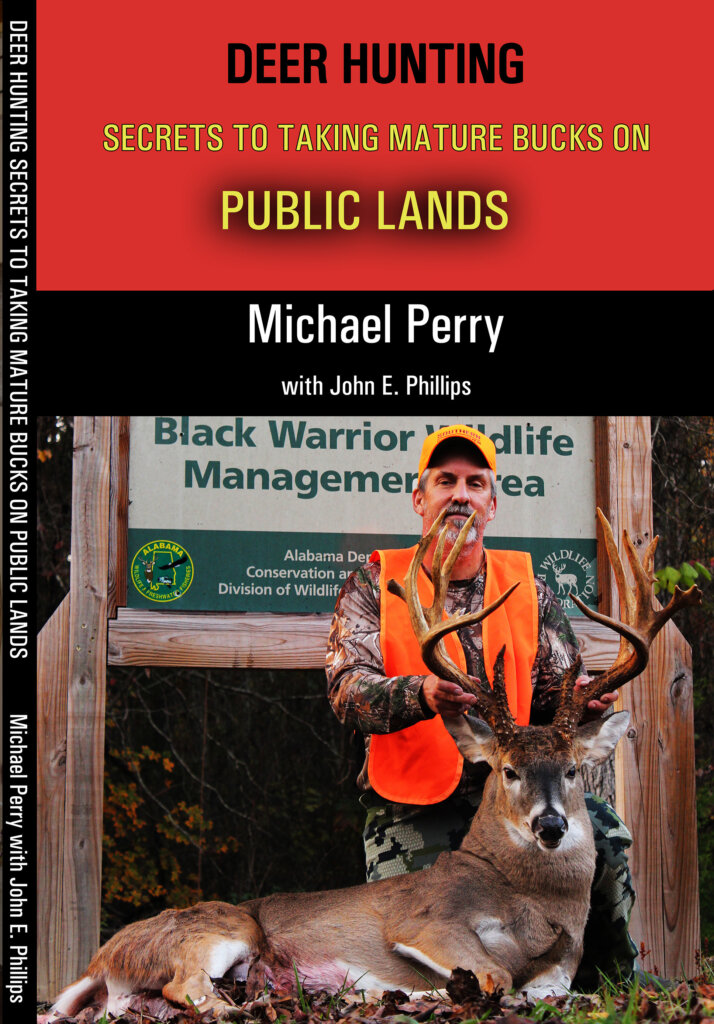

How to Hunt and Take Big Buck Deer on Small Properties
In this book, you’ll hear from 14 hunters who either have gained permission or leased properties as small as six acres to as much as 250 acres, and how they consistently take older-age-class bucks off these little lands.
VERSIONS: AUDIBLE, KINDLE & PRINT

Jim Crumley’s Secrets of Bowhunting Deer
Using a black magic marker and a gray work jumpsuit, Jim Crumley of Buchanan, Virginia, drastically changed the nature and purpose of hunting camouflage when he created the first sportsman’s camouflage – Trebark. Crumley’s love of bowhunting and his desire to be more invisible changed hunting clothing forever.
In this hunting guide, he shares the wisdom that he’s learned throughout his lifetime about how to be a hunter, how to find a deer lease, how to scout for deer, and more.
Special features include how to:
- Have a magic 60 acres to hunt
- Decide the best equipment to use
- Find deer year-round
- Locate land to hunt
- Know the best place to put your tree stand
- Get bucks within bow range
VERSIONS: AUDIBLE, KINDLE & PRINT

How to Hunt Deer Like a Pro
How do you know if the land you hunt has a trophy deer on it? Wildlife manager Bob Zaiglin, of Uvalde, Texas and Jim Crumley, the father of modern-day hunting camouflage, tells you how to find out. GPS can make finding and taking that trophy buck easier. This hunting guide will teach you how to hunt big bucks where no one else can find them, how to call deer, and how to become versatile as a deer hunter, so that if one deer tactic doesn’t work, another one will.
In the chapter, “How to find Bucks at Scrape,” Dr. Keith Causey, retired professor of Wildlife Science at Auburn University, describes the best way to hunt a scrape.
Brad Harrison of Neosho, Missouri, is a nationally-known videographer, professional deer hunter and master at calling deer. Another master is Will Primos of Primos Game Calls. These two experts will tell the best deer calls and when to use them in this book.
And for over 20 years, Bo Pitman, lodge manager of White Oak Plantation, has been studying deer movement patterns. He explains what types of conditions are best for predicting deer movement.
VERSIONS: AUDIBLE, KINDLE & PRINT

Deer hunting and deer hunters are drastically changing each year. To learn new techniques for hunting deer and have more places to hunt, I’ve interviewed some of the best deer hunters in the nation and share their tactics in How to Hunt Deer Like a Pro: Volume II.
In Chapter 10, Jacob Lamar tells you his tactics for consistently taking older-age-class bucks on public lands in several states. Chapter 11, Bob Walker explains how to find places on public lands where you can hunt that 99 percent of the other hunters never have considered hunting. The Bonus Chapter with David Ramey tells you how, where, when and with what equipment to take big Kansas bucks on public lands by hunting in 100-degree weather when others won’t hunt.
Chapter 13, Mark Drury, his family and his guests take mature bucks every season by having more small places to hunt rather than one large property. Drury explains the strategy of having satellite farms to hunt that only may be 50-150 acres each or less. Chapter 15, Pat Reeve, who hunts far-northern states and Canada, says, “I don’t like hunting for mature bucks until the weather is 20 degrees or less.” Chapter 4, Dr. Larry Marchinton says that funnels are the most-reliable stand sites to hunt for big bucks and tells why.
VERSIONS: AUDIBLE & PRINT
Tomorrow: Hunting Mature Public Land Buck Deer

